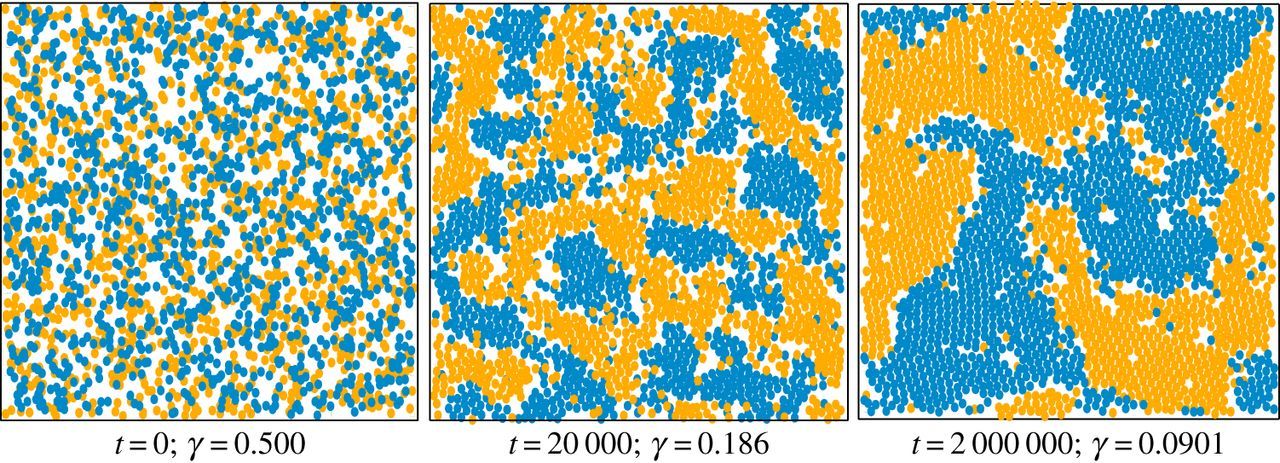
Citation
C. Strandkvist, J. Juul, B. Baum, A. Kabla and T. Duke
Interface Focus 4:20140013 (2014)
Abstract
Abstract
Our current understanding of cell sorting relies on physical difference, either in the interfacial properties or motile force, between cell types. But is such asymmetry a prerequisite for cell sorting? We test this using a minimal model in which the two cell populations are identical with respect to their physical properties and differences in motility arise solely from how cells interact with their surroundings. The model resembles the Schelling model used in social sciences to study segregation phenomena at the scale of societies. Our results demonstrate that segregation can emerge solely from cell motility being a dynamic property that changes in response to the local environment of the cell, but that additional mechanisms are necessary to reproduce the envelopment behaviour observed in vitro. The time course of segregation follows a power law, in agreement with the scaling reported from experiment and in other models of motility-driven segregation
Figure sample

Time course of the segregation process for 2500 cells. As the cells gradually gather in larger clusters, the interface index γ decreases. The ratio of the diffusion constants is k = 64.

